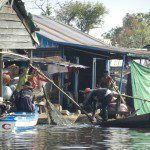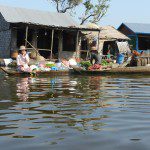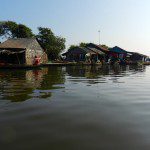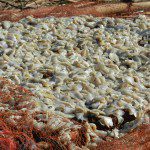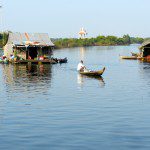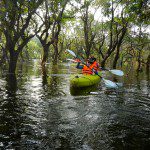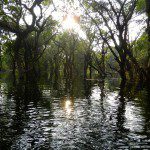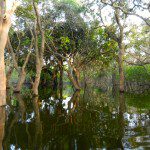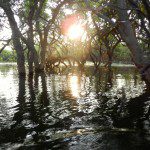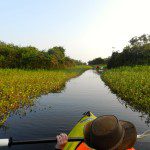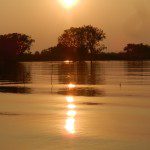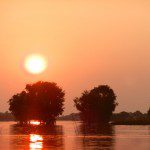Floating village and drowned forest
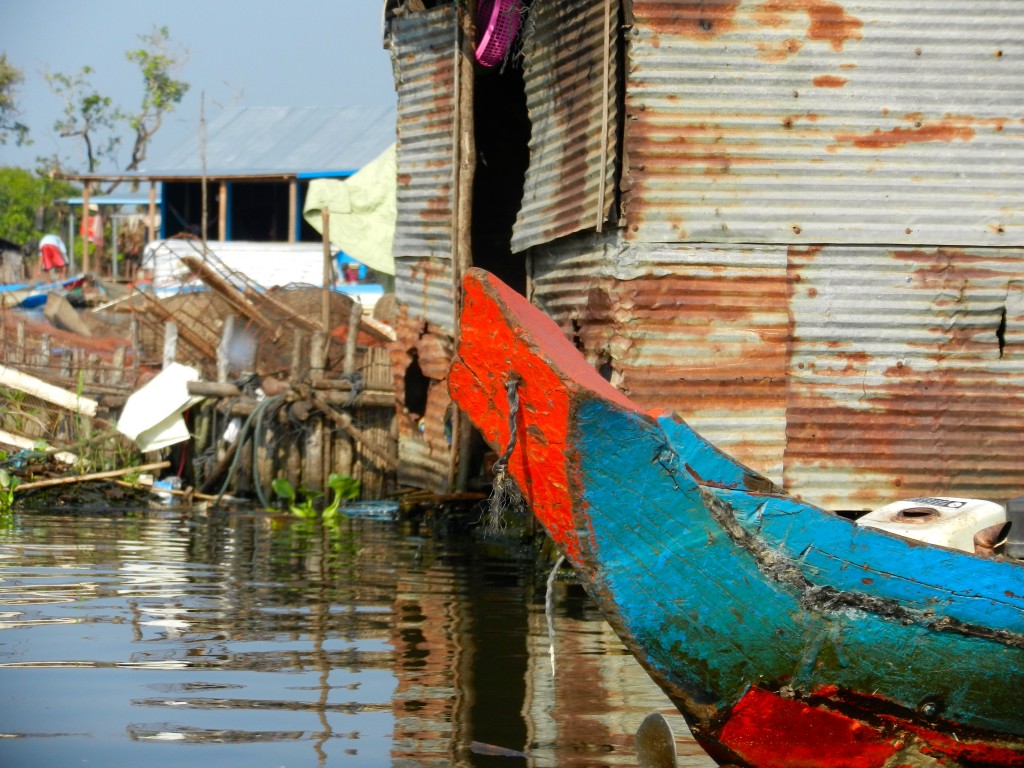
When is kayaking like riding a bicycle? When you are paddling through the lanes of a floating village of course.
Tonle Sap is South East Asia’s largest lake. It flows in two directions depending on the season. During the dry season is covers about 2,000 square kilometres and is less than a meter deep. Then the rains come; the lake quickly covers 16,000 square kilometres and has an average depth of 9m. That enormous change drives the lives of the people who live on the lake. And I do mean ‘on’ the lake.
The floating villages of Tonle Sap are built on rafts of bamboo. People spend their entire lives within these floating communities, moving with the rise and fall of the waters. The small village we visited has some mobile phones and televisions, and outboard motors of course, but otherwise is probably much the same as it was 100 years ago. The community relies on fishing for its livelihood, although many of the floating houses also have floating gardens or floating pig-pens to supplement their diet and income.
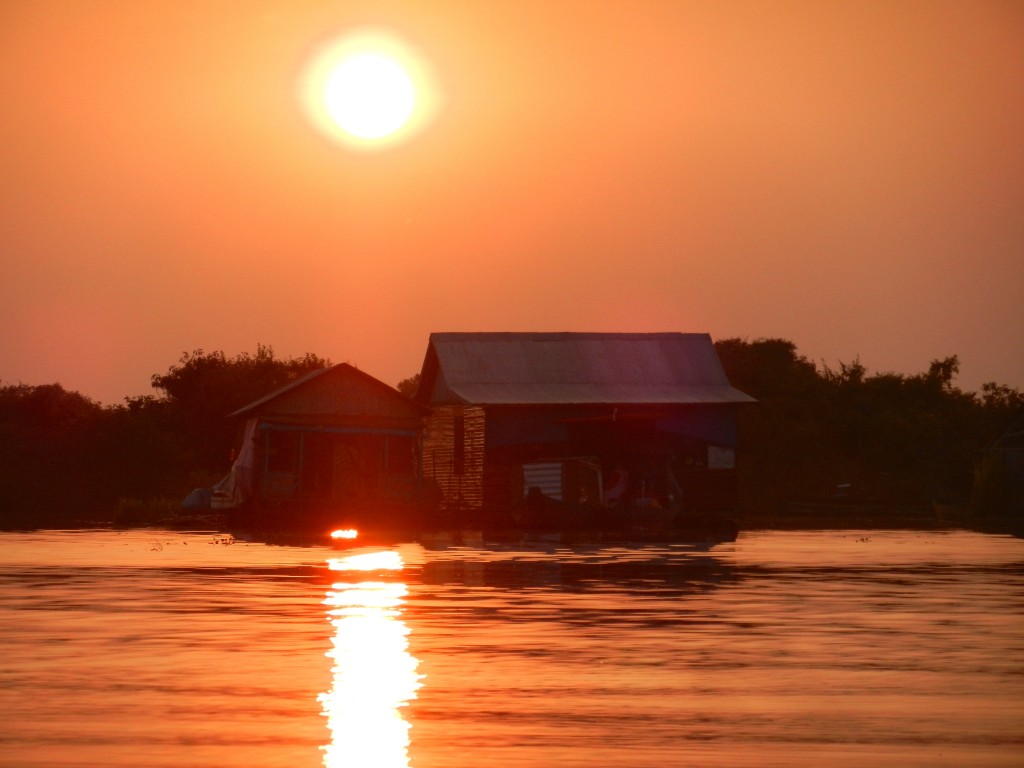
We kayaked around the village – which for a place like this is akin to riding a bike around the roads. The main reason the whole village moves with the rising waters is a combination of being near the fishing and keeping safe from the weather on this huge lake. So the secluded spot they currently reside on has not the slightest natural ripple on the water. The village is extraordinarily peaceful. Even as we visited, though, they were moving houses further out into the lake as the waters receded. The school had been moved last week and now sat in lonely isolation about a kilometre further out than the village.
As part of the huge rise and fall of the lake, the surrounding forests spend half the year under water. We kayaked through one of these drowned forests; sliding down narrow paths through the tangled trees to see where the fishermen lay their nets to catch literally tons of fish as the lake drains. The drowned forest was somewhat eerie but again beautifully peaceful. Finally we paddled between long banks of flowers to pop out into the open water and be picked up by our mother boat.
As the Sun went down, casting golden lines on the water, we sped back to land. We drove past locals lounging about in the quiet of the day, their work done, and simply watching the birds fly home, the fish jump, the insects skitter, and some foreigners slide on by.
For those who might come after: Floating Village tours on Tonle Sap have a terrible reputation as a tourist rip-off. We used Unique Kayaks and, although they are expensive by local standards, completely avoided both the crowds and the rip-offs.
